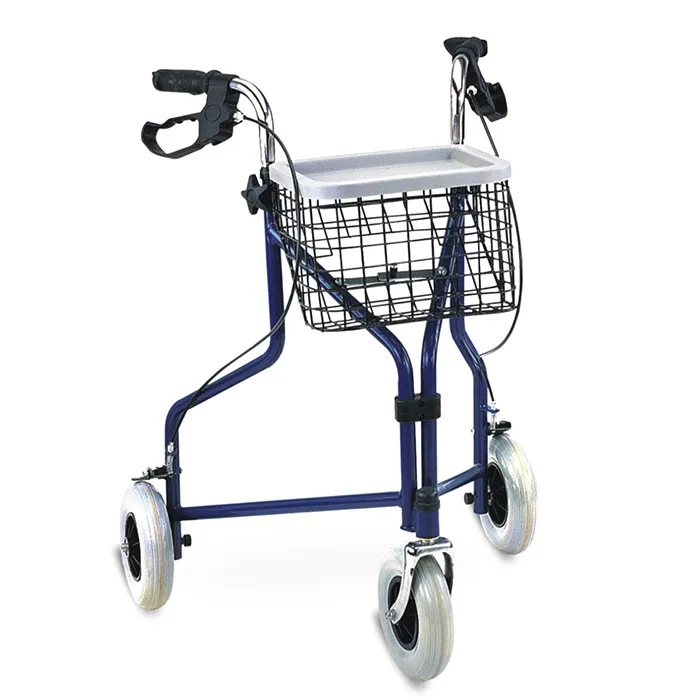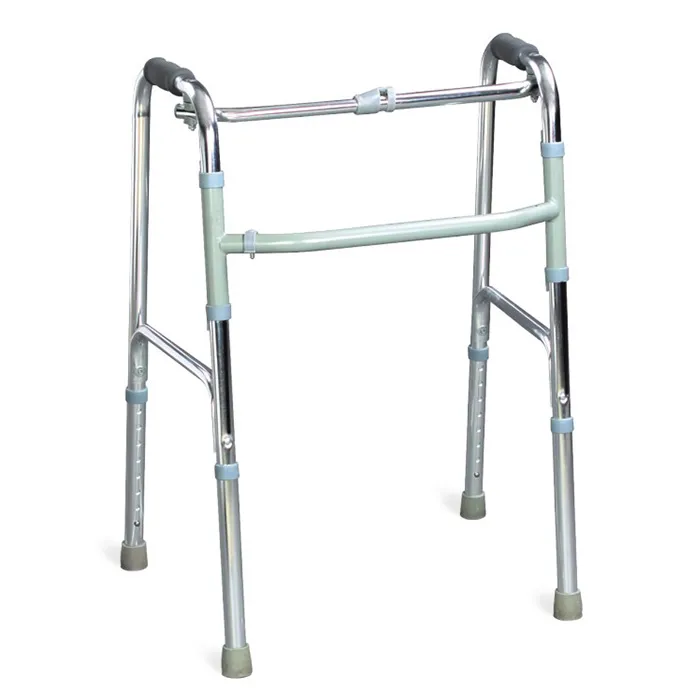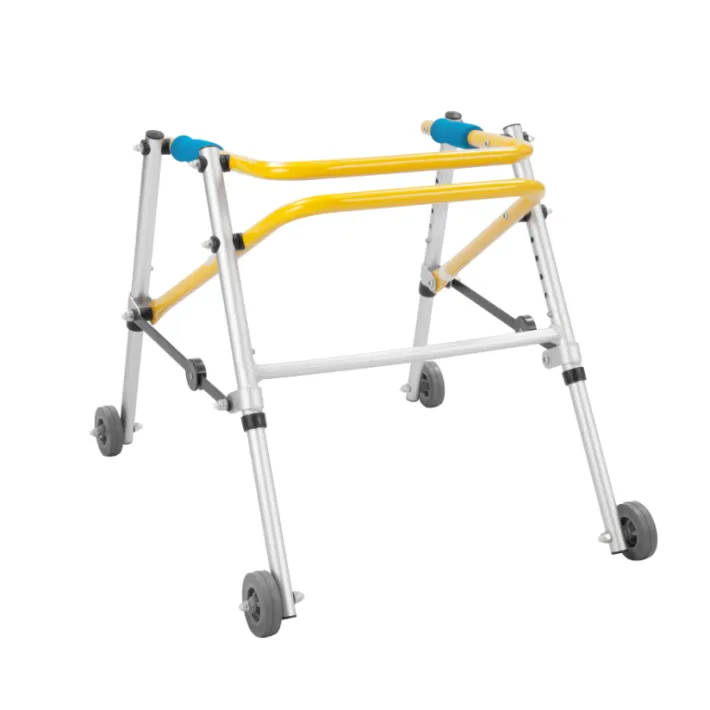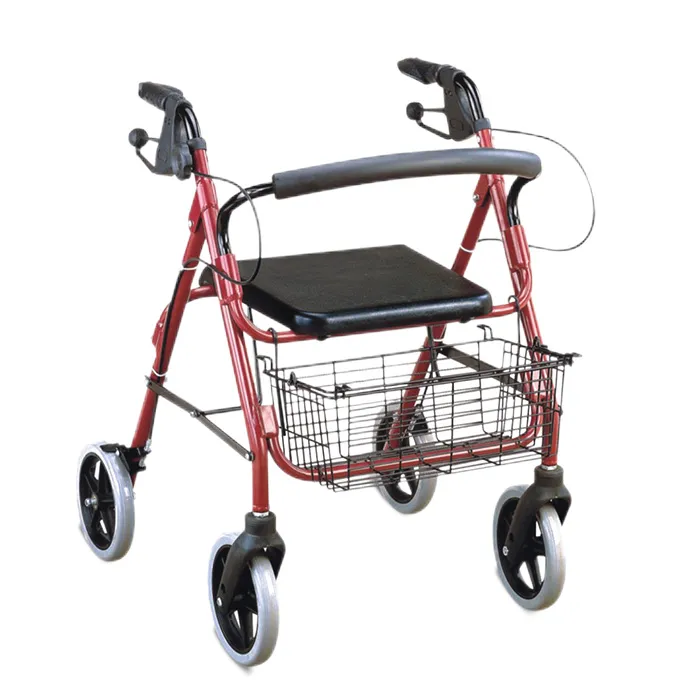In the field of mobility assistance devices, rollator and walking frame are two very common assistive tools, which are widely used in the daily life of the elderly, rehabilitation patients and people with limited mobility. However, due to the similar appearance and similar functions of the two, many people are often confused when choosing. What is the difference between a rollator and a walking frame? This has become a question that urgently needs a professional answer.
This article will comprehensively and in detail analyze the differences between rollator and walking frame from multiple dimensions such as definition, structure, functional characteristics, applicable population, usage, safety, convenience, etc., to ensure a professional and systematic discussion around the keyword "rollator" and provide scientific reference for people in need.
What is a rollator?
A rollator is a mobility assistance device with wheels, which is mainly used to support the body, help maintain balance and assist walking. Rollator generally has four wheels (there are also three-wheel designs), a brake system, and some models are also equipped with seats and storage baskets, which are convenient for users to rest or carry items while walking.
The main features of the rollator include:
● It can be pushed forward without lifting;
● It is suitable for long-term walking;
● It provides a certain amount of load-bearing support;
● It helps relieve walking fatigue.

What is a walking frame?
A walking frame is usually a metal frame without wheels. The user needs to lift the walking frame, move a small step, and then walk forward. The walking frame mainly relies on the user's arm strength to move the bracket and enhances gait stability by supporting the body weight.
The main features of the walking frame:
● Simple structure, no wheels or only front wheels;
● It is necessary to lift or slide the walking frame to move;
● It is suitable for short-distance walking;
● It strengthens the body's weight support.

Rollator and walking frame: main structural differences
Although the rollator and walking frame are similar in appearance, there are obvious differences in structural design.
1. Structural features of rollator
● Number of wheels: usually three or four wheels;
● Brake system: equipped with hand brake or pressure brake system, so that it can be stopped at any time while walking;
● Seat design: some rollators have a folding seat in the middle, which is convenient for resting while walking;
● Rich accessories: such as shopping basket, cane holder, water bottle holder, etc.;
● Adjustable height: adjust the height of the handrail according to the user's height.
2. Structural features of walking frame
● Wheelless or small wheel design: traditional walking frames have no wheels, and some modern walking frames add small wheels at the front for pushing;
● Simple frame: mainly U-shaped or quadrilateral metal bracket;
● No brake system: generally not equipped with brakes;
● Lightweight and no accessories: rarely with additional functions;
● Fixed or foldable: some walking frames are fixed, and some are foldable for easy storage.
Rollator and walking frame: functional differences
Although both rollator and walking frame can play a walking auxiliary role, there are essential differences in functional realization.
1. Functional advantages of rollator
● Suitable for long-distance walking: the wheel design reduces the user's physical exertion;
● Faster walking speed: sustainable propulsion, natural stride;
● Convenient rest: the built-in seat design is convenient for resting after long-term walking;
● High versatility: convenient for shopping, carrying items, and improving life independence.
2. Functional characteristics of walking frame
● Emphasis on stable support: suitable for people who need a lot of body weight support;
● Controllable speed: due to the need to lift and move, the walking speed is slower and safer;
● Short-distance rehabilitation use: suitable for short-distance indoor walking and patients in the early rehabilitation period after surgery.
Rollator and walking frame: Differences in applicable populations
The key to correctly choosing a walking aid is to match the individual's physical condition and specific needs. The rollator and walking frame are also aimed at different populations.
1. Applicable groups of rollator
● People with moderate muscle strength who need balance support but can walk independently;
● People who need to walk for a long time and want to have a rest function in the middle;
● Elderly people with good walking ability but mild balance disorder;
● People in the middle and late stages of rehabilitation who need to increase the radius of activity.
2. Applicable groups of walking frame
● Patients in the early recovery stage after lower limb surgery;
● Patients with insufficient muscle strength and need additional support;
● People with severe balance disorders who need stable support for each step;
● People who lack physical strength and can only walk for a short time and short distance.
Rollator and walking frame: Difference in usage
Different usage methods are the direct reflection of the difference between rollator and walking frame.
1. How to use rollator
● Hold the handrails with both hands and gently push the rollator forward;
● Control walking and stopping through the brake system;
● If you feel tired while walking, you can use the seat to rest;
● Suitable for a relatively flat and barrier-free ground environment.
2. How to use the walking frame
● Push the walking frame forward a small step;
● Hold the handrails of the walking frame with both hands;
● Move the center of gravity of the body into the walking frame, then take a step and follow;
● Suitable for use indoors, in narrow passages, and in places with complex ground.

Safety comparison: rollator vs walking frame
Safety is one of the important indicators for evaluating auxiliary equipment. Rollator and walking frame have their own advantages and disadvantages in different situations.
1. Safety of rollator
● Suitable for use in areas with flat ground;
● If used on a slope or uneven road, the wheels are easy to lose control, so the brakes must be used properly;
● There may be certain risks in places with dense crowds or many obstacles.
2. Safety of walking frame
● Since it needs to be manually lifted or slid forward, it has extremely high stability;
● It is slow and not easy to lose control, suitable for people with poor balance;
● It is not suitable for large-scale outings or uneven ground.
Rollator and walking frame: Convenience comparison
Modern walking aids also increasingly emphasize convenience and portability, and rollator and walking frame have different performances in this regard.
1. Convenience features of rollator
● Most rollators are foldable, making them easy to put into the trunk of a car;
● They are relatively heavy, requiring a certain amount of physical strength to carry;
● They have many additional functions, making them convenient for daily shopping.
2. Convenience features of walking frame
● They are light and easy to carry;
● They are small in size after folding, making them easy to store;
● They are suitable for short-distance and temporary assistance needs.

Rollator and walking frame each have their own advantages and disadvantages, and scientific selection is required
Through the above comparison, it can be clearly seen that although rollator and walking frame are both walking aids, they have obvious differences in structural design, function realization, applicable population, usage methods, safety and convenience.
A brief summary is as follows:
| Comparison items | Rollator | Walker |
| Support method | Push | Lifting/sliding |
| Wheels | Yes (usually 4 wheels) | Usually no wheels or small wheels |
| Applicable scenarios | Long distance, flat surface | Indoor, short distances |
| Safety | Reliant on brakes, high risk on slopes | Good stability, easy control |
| Weight | Slightly heavy | Lightweight |
| Additional functions | More (seat, basket, etc.) | Small |
Therefore, when choosing to use a rollator or a walking frame, you should fully consider your personal physical condition, usage environment and specific needs, and avoid blindly following the trend to ensure walking safety and convenience in life.
How to Purchase Products from Yikang Medical?
Purchasing medical equipment from Yikang Medical is easy and straightforward. First, browse our extensive product catalog to select the items you need, whether it’s hospital beds, wheelchairs, or rehabilitation devices. Once you’ve decided on your products, you can request a quote for bulk orders, negotiate pricing, and finalize the order.
We offer both retail and wholesale options, with discounts for large orders. Our team is here to assist with any questions, ensuring that you get the best value for your purchase.

